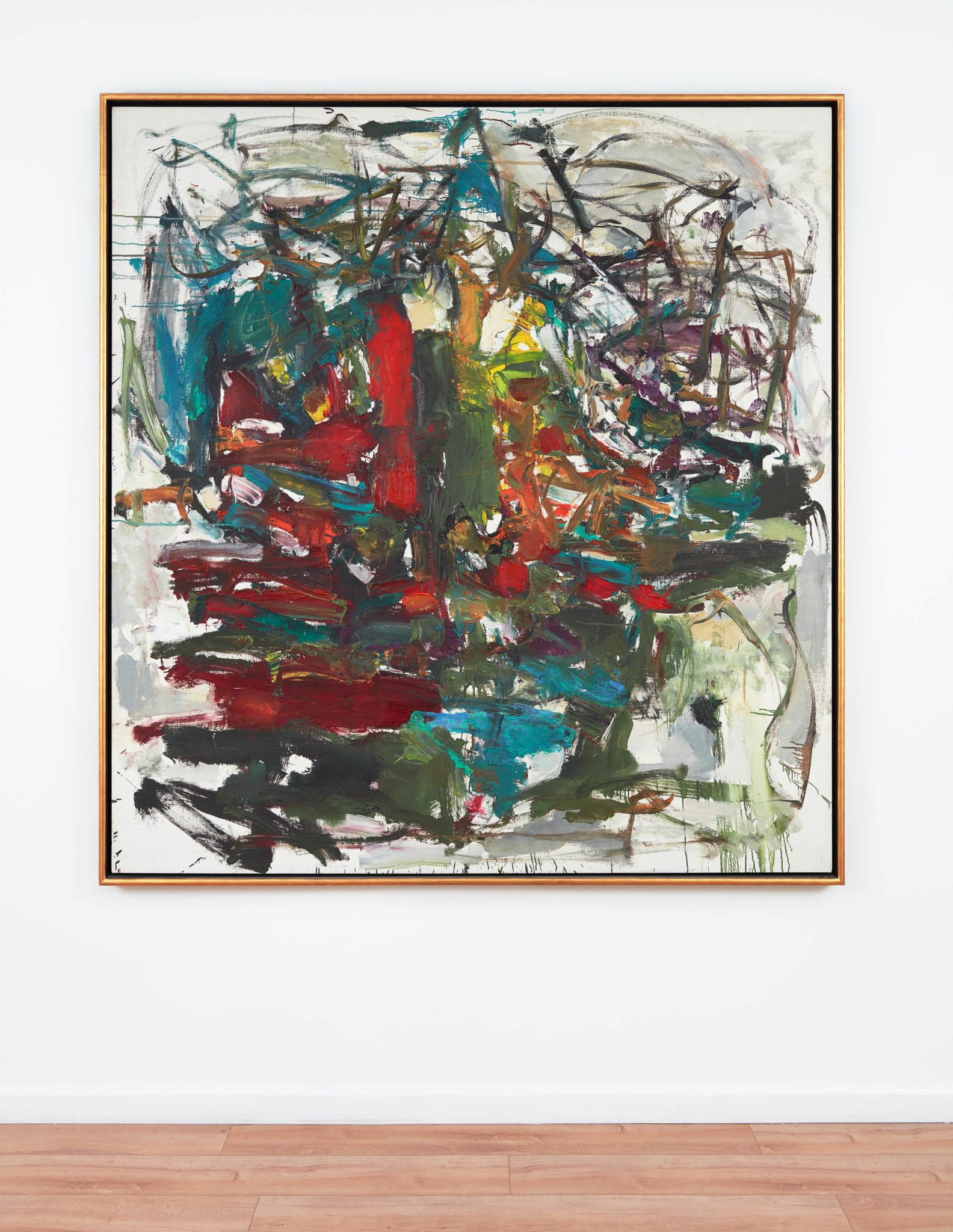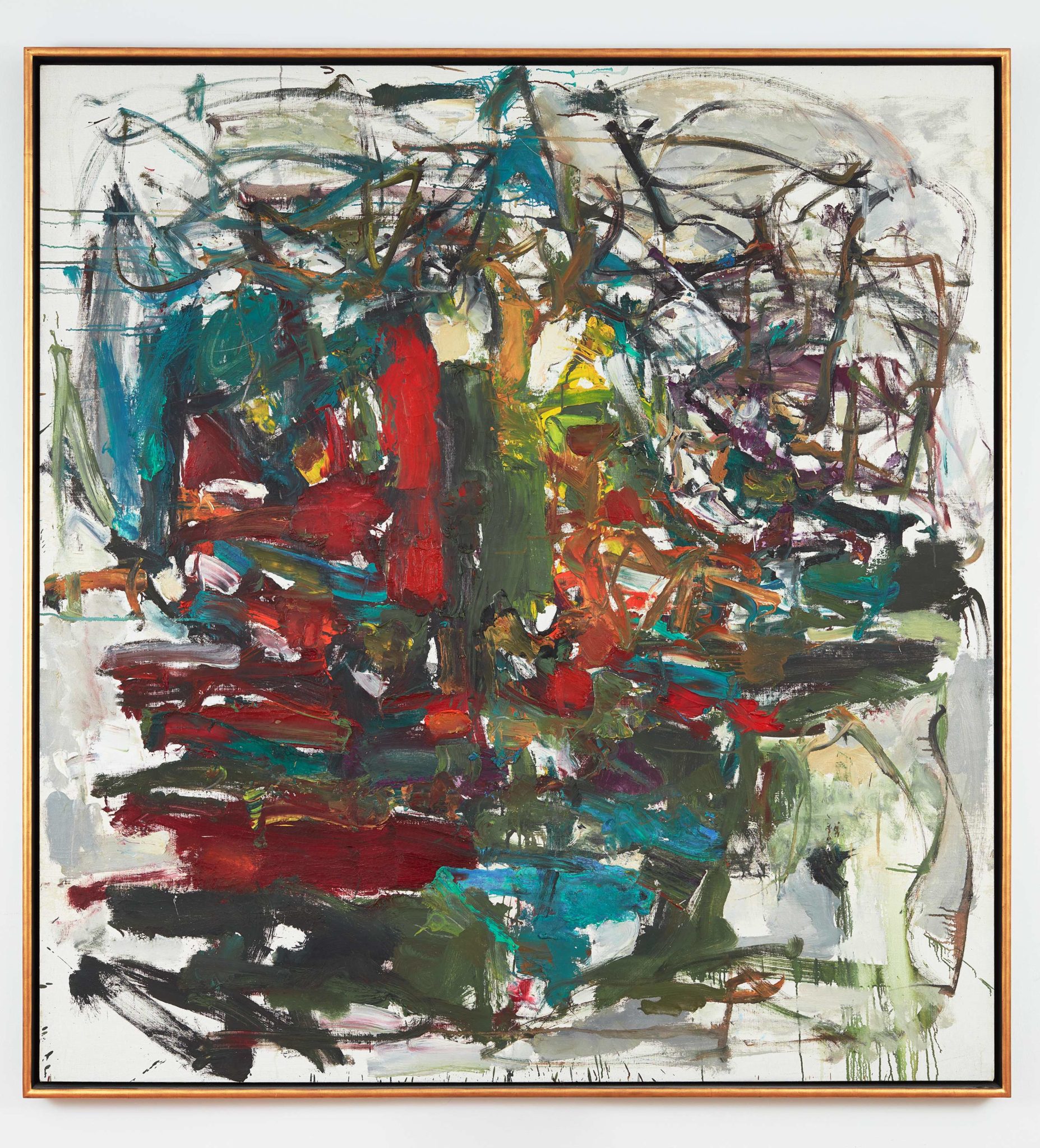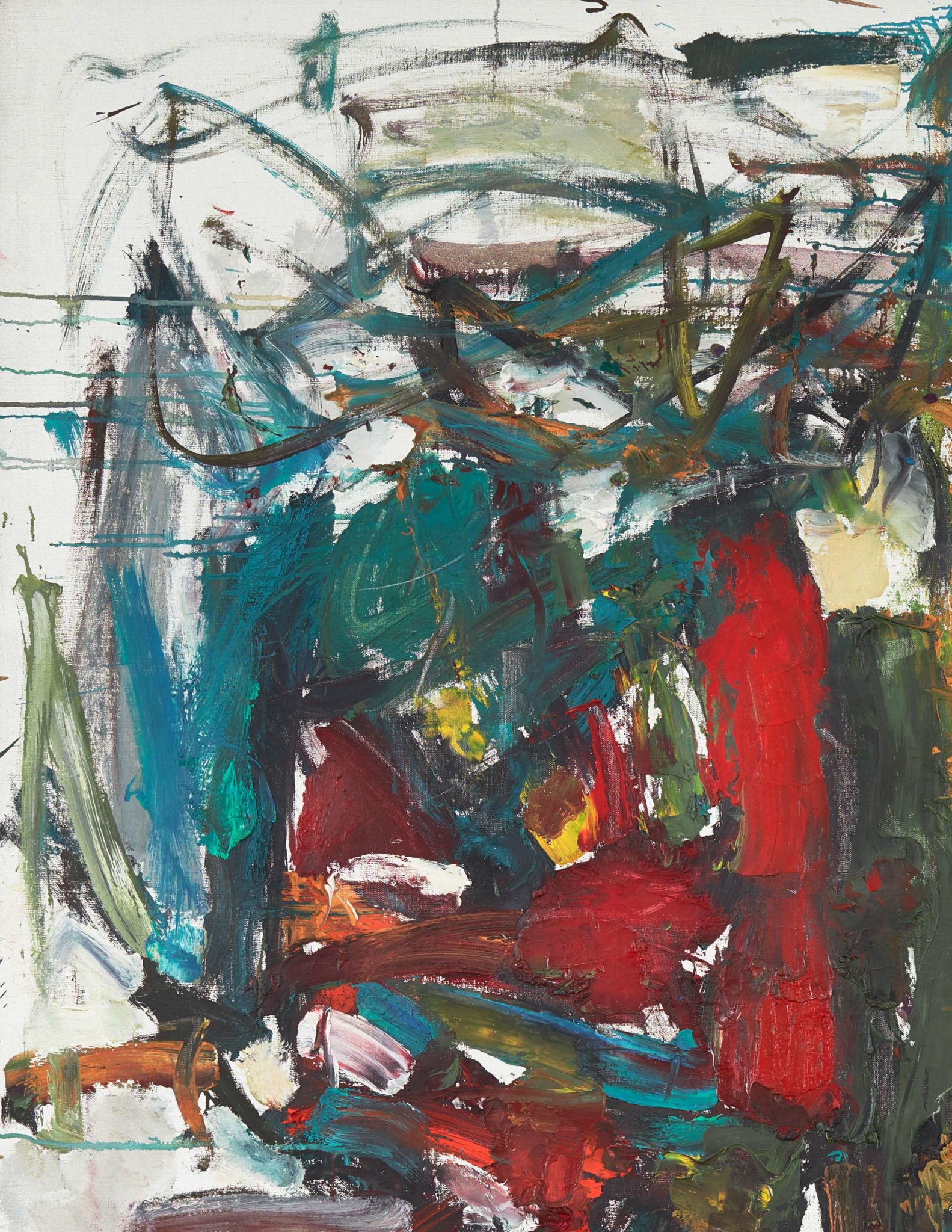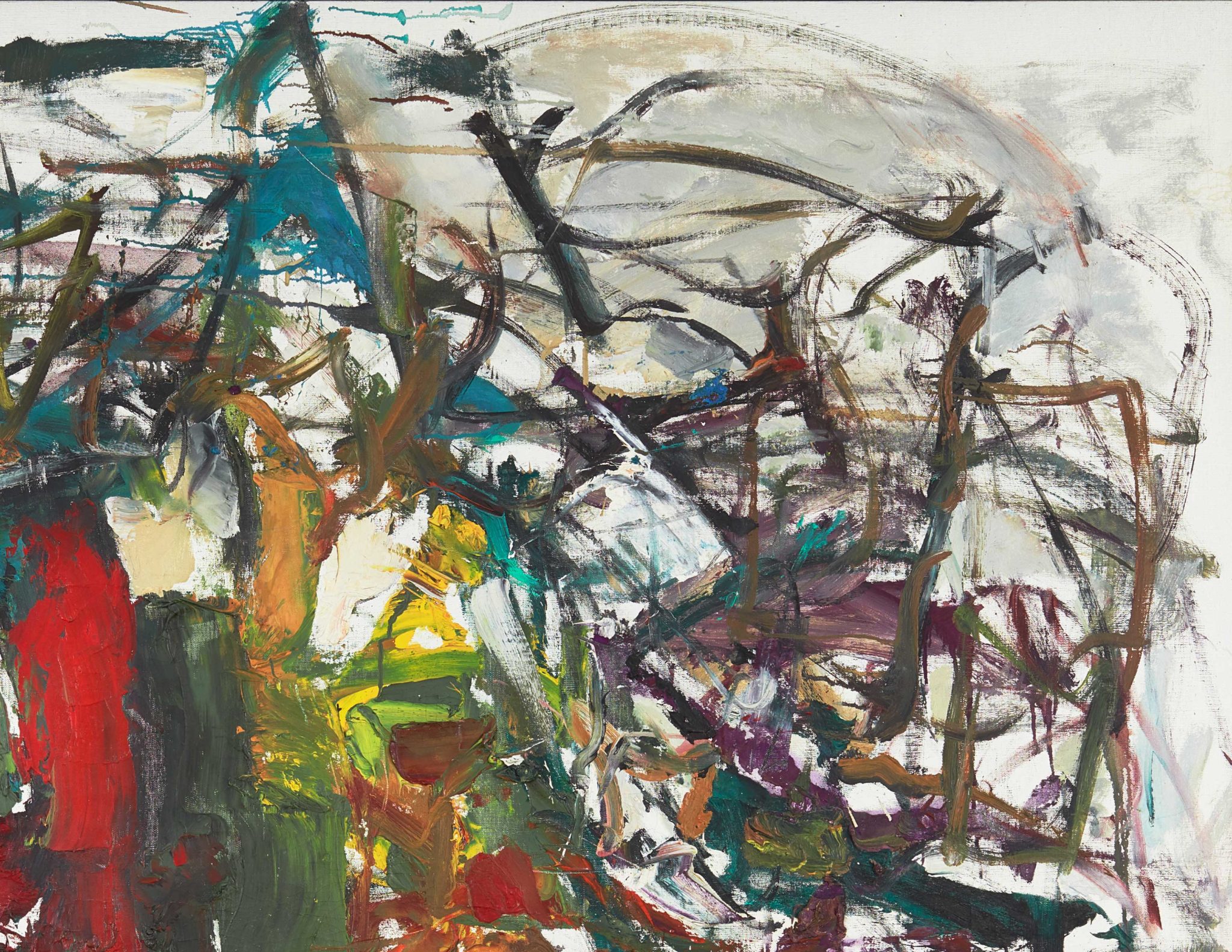Joan Mitchell
Untitled
1959
Oil on canvas
69 3/8 x 65 1/8 inches (175.2 x 165.4 cm)
My paintings are titled after they are finished. I paint from remembered landscapes that I carry with me — and remembered feelings of them, which of course become transformed. I could certainly never mirror nature. I would more like to paint what it leaves with me.
–Joan Mitchell, interview with John I. H. Baur, Nature in Abstraction, exh. cat. (New York: Whitney Museum of Art, 1958), 73.
In 1959, Joan Mitchell moved from New York to Paris. She had already established herself at the vanguard of New York’s second-wave Abstract Expressionist scene—no small feat for a woman working at a time when Clement Greenberg would advise the legendary dealer Sam Kootz not to work with women since they would “just get pregnant.”
It was in Paris that Mitchell would paint Untitled—a work that reveals the artist’s virtuosic sensibility for gesture and balance while anticipating the centralized compositions of her multi-panel works of the 1960s. Organized around a sinewy armature of thin brushstrokes on primed white canvas, Untitled crescendos in a central impasto passage, where primary colors animate a dense field of brushstrokes. Mitchell relieves these swathes of impasto with secondary pigments and lighter hues, establishing a vague grid of brushwork that hangs over the canvas like a storm cloud. This maelstrom of color dissipates into a haze of chalky whites and grays towards the edges of the canvas, producing a visual and thematic tension. As ominous as it is lush, Untitled is exemplary of the complexity and profound visual force of Mitchell’s oeuvre. The gestural urgency evokes the artist’s need to affirm her position in an art world that would not easily accommodate her. For Mitchell, the timelessness of painting ultimately transcended the ephemerality of style. “Music takes time to listen to and ends, writing takes time and ends, movies end, ideas and even sculpture take time,” Mitchell described. “Painting does not. It never ends, it is the only thing that is both continuous and still.”




